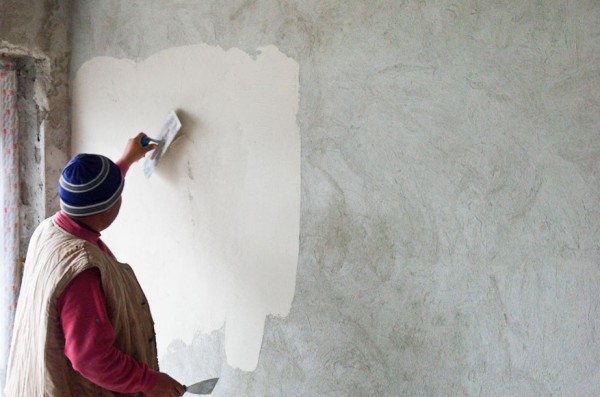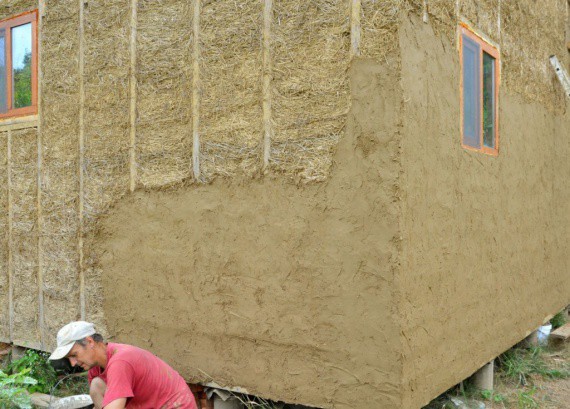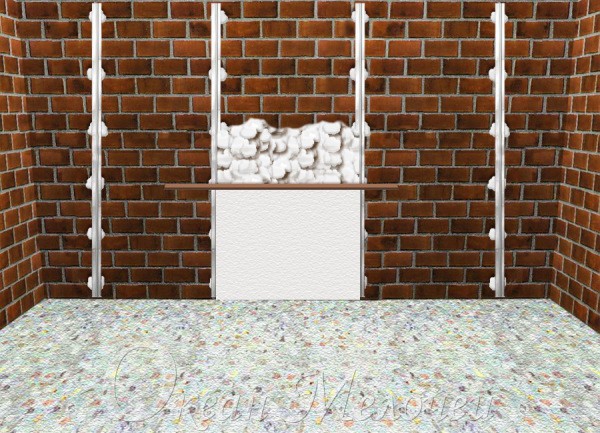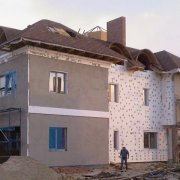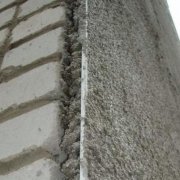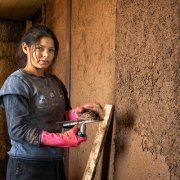How to do wall plastering with your own hands
In this article, we will consider what materials plastering and puttying of walls are made of and everything that is connected with it. Also, a video in this article and a photo will be presented to your attention, where you can get additional information you need.
The content of the article
Plastering materials and application rules
According to the rules for choosing plaster material, you must immediately look at the temperature conditions of the coating.
Two types should be distinguished here:
- This is the plastering of the outer walls. and accordingly, in this case, the material for the outer surfaces is used. It has a larger fraction, but is not affected by the external environment.
- There are also plaster for interior decoration. It is susceptible to moisture and temperature extremes. But she has a finer fraction and as a result a high-quality and smooth surface is obtained.
So immediately make a choice from the above two options. Having done the work yourself, you will significantly reduce costs.
Note: Wall repair plaster in any case is applied to a quality prepared surface. The durability of the coating depends on this.
Foundation preparation
With your own hands, wall plastering begins with preparation. For this, everything that is not needed is removed. All the old coating is tapped and if there is a peeling, they should be removed with a chisel and a hammer.
Attention: Before applying the plaster to the wall surface, it must be treated with a special compound - a primer. It strengthens the base, reduces the likelihood of colonies of the fungus or other harmful microorganisms. In addition, the presence of a soil mixture ensures uniform distribution of the finish material.
Soil compositions are divided according to the substances on the basis of which they are produced:
- Acrylic, Acrylic polymers are used for its production. In fact, it is a universal soil composition that can be used for substrates of any material except metal. This primer composition does not emit unpleasant odors. Full drying time is up to five hours;
- Alkyd, in turn, are divided into those that are released on chromate and phosphate. Alkyd compounds dry ten to fifteen hours. Basically they are used to work on fiberboard or particleboard;
- Phenolic primersare a mixture of varnish, fillers and anti-corrosion additives, it is used for processing metal and wood (see Primer for wood and the rules for its selection);
- Perchlorovinyl primers designed for outdoor use, as it is very toxic.
- To apply the soil, use a paint roller or brush. Practice shows that, as a rule, it makes no sense to apply more than two layers to wooden or metal surfaces.
- On the surface, made of materials that absorb moisture well, they include aerated concrete, etc.. It is necessary to apply several layers. To increase the reliability of fixing the plaster layer, in difficult places, for example, at the junction of the surface of the floor and ceiling, it is advisable lay the mesh.
Attention: Experience shows that if during the finishing works, for a number of reasons, the primer was not applied, then you can be sure that over time spots, cracks and other defects will form on the surface.
Wet plastering method
Historically, stucco is applied in three layers, one on top of the other. Moreover, each layer has its own tasks.
So:
- The initial layer is called spray. It provides adhesion of the finishing solution to the material of which the wall is built. The thickness of the spray layer on the surface of a tree can not be more than 8 - 10 millimeters. When spraying is applied to a brick or foam concrete, it is necessary to monitor that its thickness does not exceed 5 - 6 millimeters. The consistency of the spray should resemble thick sour cream.
- The second layer is called soil. It is applied to a dried spray. The consistency of the soil should resemble a dough, after application it must be leveled and rubbed until a smooth surface is obtained. The quality of the applied soil ultimately regulates the thickness of the finish layer and, of course, it is the basis for it.
- Nakryvka, as they call it, a finishing layer of stucco mixture. Screened sand is required to obtain the plaster. Before applying it to the surface, make sure. that in consistency it looks like a not very thick sour cream. The second layer of soil must be moistened. This will provide improved adhesion between the layers, after which the surface is carefully leveled.
- At the end of the application of the intermediate layers of plaster, it is advisable to maintain a certain period of time, the size of which should be indicated in the instructions for use of the mixture and, of course, advice from manufacturers.
- Those who decided to independently perform work on creating a plaster coating for wallpaper or painting (see Stucco walls for painting according to technology), they should understand that the slightest mistake in technology will definitely lead to the fact that all the work done will go down the drain. The applied plaster mortar will begin to exfoliate, crack, etc.
Attention: Plastering of log walls in this case is done only with preliminary fastening of the reinforcing mesh. Otherwise, the material will not hold.
Wall plastering using mortar
The following components are required for the preparation of cement plaster:
- Sand passed through a sieve;
- Cement;
- Modifying additives, etc.
When choosing sand, it must be borne in mind that the smaller the size of the grains of sand, the smaller the layer of plaster can be made.
The method of manufacturing a plaster mortar is simple:
- This will require a capacity of about eight liters. It must be filled in half. Then, gradually, pour in uniform portions into the water, at the same time it is necessary to stir it. To do this, you can either make a mixer, or using a trowel.
- In the manufacture of the solution (see How to prepare the mortar for plaster correctly) it is necessary to ensure that part of the main binder does not exceed the established proportions. Because of this, the setting process of the solution can be accelerated, which will necessarily lead to difficulties in leveling.
- To transfer the mortar and the container to the surface of the building structure, you need a trowel or spatula. For the leveling operation, a trowel will be necessary, and for smoothing, a grater will be needed. For a novice plaster it is enough to have a spatula and a grater on hand.
- Professional plasterers call the process of transferring mortar to the wall a blotch. Indeed, the solution that is on the trowel needs to be plopped onto the surface to be treated with a sharp movement of the hand. In this case, it will cling to the wall and help it into this microparticles, which under the influence of impact penetrate into the outer layer of the material. If you look closely, the movements of the master resemble the actions of a table tennis player.
- The practice of applying the solution shows that there is no need to fill a large area of the wall. The optimum area for work is about one square meter. Having spanked the selected site, you can begin to align it.This operation is performed using circular motions that must be done counterclockwise.
- During this operation, a solution enters the voids located on the wall and excess solution must be removed from the wall and shaken off into the container. The solution layer dries within a few hours. Usually, 8 hours is enough for this and only after that it is permissible to slap a new layer.
- The corners are aligned using a trim board, which is attached to the wall with screws.
Gypsum plastering (alabaster)
Plaster or alabaster mixtures were created in due time to facilitate the life of finishers. These mixtures are applied to the wall surface without any problems, quickly harden, but inferior to mixtures made of cement in strength and resistance to wear.
- There are certain rules when working with gypsum solutions. In particular, the solution can only be prepared in a clean container; clean tools must be used to prepare it. The thing is that the ingress of foreign particles into it leads to a reduction in the solidification time.
- When working with gypsum mortar, plasterer is not required to possess high professionalism and know all the intricacies of the profession. Alabaster is applied to the surface of the wall with a trowel or trowel. In order to make a gypsum mixture, you must carefully study the instructions from the manufacturer. The finished solution must be applied to a surface area and then, using a wide spatula or rule, it must be leveled. Alignment is performed alternately - vertically and horizontally. The layer of applied alabaster dries for two to three hours.
- To form a right angle, you must use a special device. It must be pressed down in the right place on the surface to be treated and then with the help of a spatula to level the resulting planes. After the gypsum begins to harden, the plaster should remove excess plaster that has formed. By the way, this operation can be very difficult for someone who first took up the trowel.
Attention: The disadvantages of gypsum mortar include its poor compatibility with surfaces coated with oil paint. The fact is that when the alabaster dries, water is released from it, which is the reason for its lagging behind the paint.
Lighthouse decoration
Novice plasterers who want to know how to apply the solution under the wallpaper and other finishing materials, the description of this process may be too complicated and obscure. But practice shows that everything is not so complicated and scary.
It’s enough to watch several videos related to this topic and get instruction on how to perform simple alignment using metal profiles.
To level the surface, you will need a rule with a length of about two meters, a metal profile and, of course, a plastering tool.
In general, the technology for working with beacons looks something like this:
- Reiki, performing the role of beacons, placed at a distance of 200 mm from the end of the wall;
- Perform a curvature check using a level and a plumb line;
- Along the rule, which is placed vertically, gypsum tubercles are formed on the wall with a pitch of 200 - 300 mm;
- As a rule, tubercles are pressed in, thus forming a level that will serve as a level in the process of leveling the plaster;
- Lighthouses must be fixed with a solution;
- The location of the intermediate beacons is carried out using cords pulled by racks, fixed at the edges of the working field.
- After the mortar with which the beacons were fixed acquires a certain hardness, it is necessary to apply plaster between the profiles;
- The rule is pressed against the guide beacons and moving it as along the guides, the solution is leveled.
The rule is moved from top to bottom, sometimes it is turned to the side. Thus, a smooth surface of the stucco mortar is created. As soon as everything is dry, the beacons are removed from the wall, and the vacated space is filled with a solution.
Mechanized plastering
Why is the mechanized method of applying plaster so good?
This method allows to reduce the complexity in the manufacture of plaster mortar. Thus, there is a reduction in time spent on preparatory and basic work, while there is a decrease in material consumption.
So:
- The mixture is fed using special compressor equipment, which allows for high pressure. Thus, high adhesion of the plaster mortar to the base of the building structure is achieved.
- When feeding the solution, thus, a uniform supply of material occurs, this method does not allow the appearance of bumps or depressions.
- The use of this method of plastering allows you to get a flat surface that does not need additional processing. Thus, there is a decrease in the cost of work performed.
- But it should be noted that this type of application is good for use in rooms with a large processing area, the use of a mechanized method in a small apartment can cost the landlord a pretty penny.
Plastering the wall is not difficult to apply, here you just have to do everything carefully and deliberately. Keep track of the viscosity of the composition, because if it is very liquid, then it will not dry, and there will be an influx. The instructions will help you do everything right and avoid mistakes.
